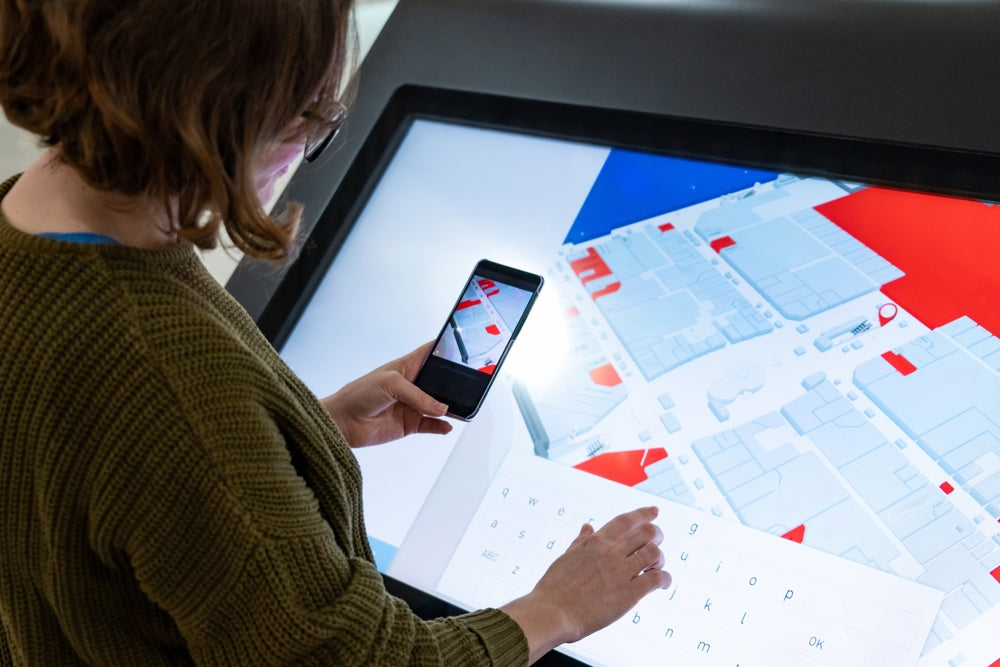
What is Capacitive Touch Technology?
Capacitive touch technology is one of the most popular touch technologies used today, powering a wide range of devices from smartphones to large interactive displays. In this article, we’ll dive into the two main types of capacitive touch technologies: Surface Capacitive Touch and Projected Capacitive Touch. We’ll explore how they work, their advantages, and why they are ideal for modern touch applications.
What is Capacitive Touch Technology?
Capacitive touch technology detects touch by sensing changes in electrical fields. Unlike resistive touch technology, which relies on pressure, capacitive touch works by detecting the electrical properties of the human body. There are two primary types of capacitive touch technology: Surface Capacitive Touch and Projected Capacitive Touch. Both operate on the principle of capacitance, but they differ in design and functionality.
Surface Capacitive Touch Technology
Surface capacitive touch technology is one of the earlier forms of capacitive touch. It consists of two conductive layers separated by a thin insulating layer. The lower conductive layer is grounded, forming an anti-interference shield, while the upper layer is the touch-sensitive surface.
How Does It Work?
1. Electrodes: The four corners of the upper conductive layer are connected to electrodes that deliver a uniform electric charge across the screen surface.
2. Touch Detection: When a finger touches the screen, it draws a small amount of current due to the electrical properties of the human body. This creates a capacitance effect between the finger and the touch area.
3. Signal Processing: The current drawn from the screen flows toward the electrodes, and the system measures the voltage changes. The amount of current flowing through each electrode is proportional to the distance between the touch point and the corners. This information is then processed to determine the touch coordinates.
Surface capacitive touch screens are responsive but have some limitations. They are sensitive to environmental interference, and they only work with conductive materials—meaning gloves or other non-conductive objects will not register touch.
Projected Capacitive Touch Technology
Projected capacitive touch technology (PCT) is the advanced version and is now the most widely used type in modern devices. It uses a grid of conductive layers, often made of ITO (Indium Tin Oxide), to create a 3D electrostatic field. This grid enables more precise and responsive touch detection.
How Does It Work?
1. Electrode Grid: PCT technology involves an array of electrodes that generate an electrostatic field. These electrodes are often arranged in a grid pattern on the screen surface, both horizontally and vertically.
2. Multi-Touch Detection: When a finger (or multiple fingers) touches the screen, the electrostatic field is disturbed, and a small amount of charge is transferred to the finger. The system detects changes in the capacitance at multiple points simultaneously, allowing for multi-touch functionality.
3. Signal Processing: The signal processor calculates the touch points by analyzing changes in capacitance. This data is processed almost instantaneously, making projected capacitive touch highly responsive and accurate.
Advantages of Projected Capacitive Touch Technology
Projected capacitive touch screens offer several key benefits:
• High Sensitivity: PCT is incredibly sensitive and can detect even light touches, making it perfect for devices that require fast and precise touch responses.
• Multi-Touch Capability: One of the standout features of PCT is its ability to detect multiple touch points at once. This allows for gestures such as pinch-to-zoom, rotation, and swiping, which are common in modern devices like smartphones and tablets.
• Durability: PCT is typically more durable than surface capacitive screens, withstanding wear and tear much better. It can also work with protective glass layers, making it ideal for rugged environments.
• Works with Gloves: Modern PCT systems can be designed to work with gloves or styluses, making them suitable for use in medical or industrial settings where users may need to wear protective gear.
Surface vs. Projected Capacitive: Which is Better?
While surface capacitive touch technology has its advantages, such as cost-effectiveness and simplicity, projected capacitive touch technology is often the better choice for modern touch applications. Its high sensitivity, multi-touch functionality, and ability to handle complex gestures make it the go-to solution for smartphones, tablets, and other consumer electronics.
In contrast, surface capacitive technology is more suited for single-point touch applications where cost and simplicity are key factors, such as in certain kiosks or ATMs. However, it falls short in areas like multi-touch and durability, making PCT the more versatile option.
Applications of Capacitive Touch Technology
Capacitive touch technology is widely used across various industries, thanks to its responsiveness and accuracy. Some common applications include:
• Smartphones and Tablets: PCT is the standard in consumer electronics due to its ability to support multi-touch gestures and high responsiveness.
• Interactive Displays: Large touchscreens used in kiosks, digital signage, and collaborative workspaces often rely on PCT to provide a seamless user experience.
• Medical Devices: PCT’s ability to function with gloved hands makes it ideal for medical environments where hygiene and precision are crucial.
• Automotive Interfaces: In-car infotainment systems often utilize capacitive touch screens to provide a user-friendly, responsive interface.
